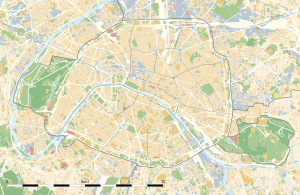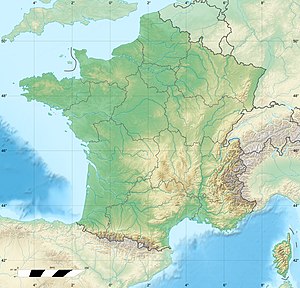
Back Tuileriensturm ALS تمرد 10 أغسطس 1792 Arabic Въстание от 10 август 1792 Bulgarian Devezh an 10 a viz Eost 1792 Breton Útok na Tuilerijský palác Czech Tuileriensturm German Ημέρα της 10ης Αυγούστου 1792 Greek Jornada del 10 de agosto de 1792 Spanish شورش ۱۰ اوت ۱۷۹۲ Persian Tuileries’n palatsin valtaus Finnish
| Insurrection of 10 August 1792 | |||||||
|---|---|---|---|---|---|---|---|
| Part of the French Revolution | |||||||
 Capture of the Tuileries Palace, 10 August 1792 by Jean Duplessis-Bertaux, 1793 | |||||||
| |||||||
| Belligerents | |||||||
|
|
| ||||||
| Commanders and leaders | |||||||
|
Antoine Santerre François Westermann Claude Fournier |
Louis XVI Augustin de Mailly Karl von Bachmann | ||||||
| Strength | |||||||
| 20,000 | 1,200 | ||||||
| Casualties and losses | |||||||
| 200–400 killed |
300–600 killed 200 captured | ||||||
Location within present-day Paris, France | |||||||
The insurrection of 10 August 1792 was a defining event of the French Revolution, when armed revolutionaries in Paris, increasingly in conflict with the French monarchy, stormed the Tuileries Palace. The conflict led France to abolish the monarchy and establish a republic.
Conflict between King Louis XVI and the country's new revolutionary Legislative Assembly increased through the spring and summer of 1792 as Louis vetoed radical measures voted upon by the Assembly. Tensions accelerated dramatically on 1 August when news reached Paris that the commander of the allied Prussian and Austrian armies had issued the Brunswick Manifesto, threatening "unforgettable vengeance" on Paris should harm be done to the French royal family. On 10 August, the National Guard of the Paris Commune and fédérés from Marseille and Brittany stormed the King's residence in the Tuileries Palace in Paris, which was defended by the Swiss Guards. Hundreds of Swiss guardsmen and 400 revolutionaries were killed in the battle,[1] and Louis and the royal family took shelter with the Legislative Assembly. The formal end of the monarchy occurred six weeks later on 21 September as one of the first acts of the new National Convention, which established a republic on the next day.[2]
The insurrection and its outcomes are most commonly referred to by historians of the Revolution simply as "the 10 August"; other common designations include "the day of the 10 August" (French: journée du 10 août) or "the Second Revolution".
- ^ Kropotkin 1929, p. 176, "[In the Tuileries palace], others of the Swiss, commanded by the officers of the Court and posted on the great staircase of the chief entrance, fired upon the crowd, and in a few minutes four hundred of the assailants lay dead in heaps at the foot of the stairs. [...] soon the Swiss, under the furious assault of the people, were either disarmed or massacred".
- ^ Thompson 1959, p. 315.


